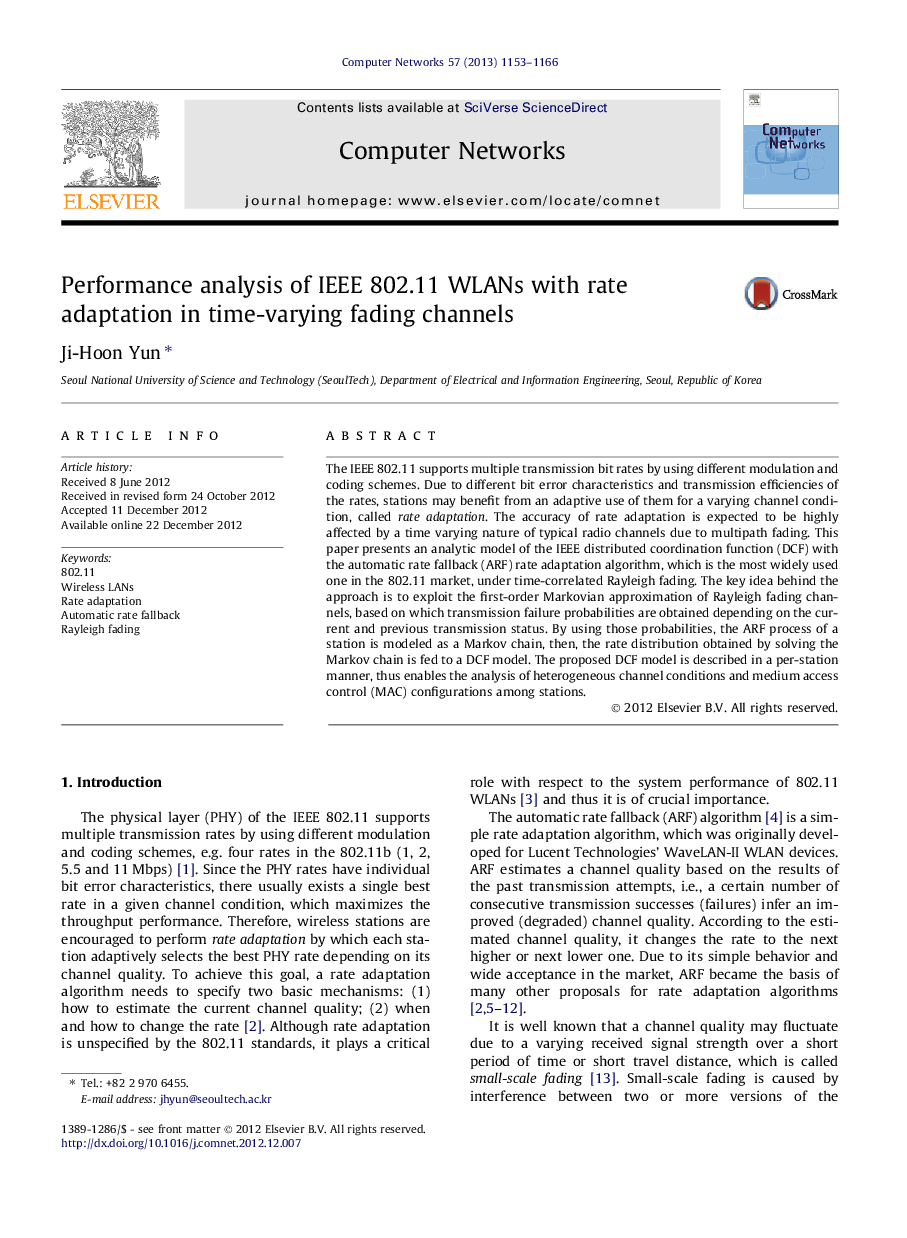| کد مقاله | کد نشریه | سال انتشار | مقاله انگلیسی | نسخه تمام متن |
|---|---|---|---|---|
| 451940 | 694436 | 2013 | 14 صفحه PDF | دانلود رایگان |

The IEEE 802.11 supports multiple transmission bit rates by using different modulation and coding schemes. Due to different bit error characteristics and transmission efficiencies of the rates, stations may benefit from an adaptive use of them for a varying channel condition, called rate adaptation. The accuracy of rate adaptation is expected to be highly affected by a time varying nature of typical radio channels due to multipath fading. This paper presents an analytic model of the IEEE distributed coordination function (DCF) with the automatic rate fallback (ARF) rate adaptation algorithm, which is the most widely used one in the 802.11 market, under time-correlated Rayleigh fading. The key idea behind the approach is to exploit the first-order Markovian approximation of Rayleigh fading channels, based on which transmission failure probabilities are obtained depending on the current and previous transmission status. By using those probabilities, the ARF process of a station is modeled as a Markov chain, then, the rate distribution obtained by solving the Markov chain is fed to a DCF model. The proposed DCF model is described in a per-station manner, thus enables the analysis of heterogeneous channel conditions and medium access control (MAC) configurations among stations.
Journal: Computer Networks - Volume 57, Issue 5, 7 April 2013, Pages 1153–1166